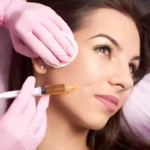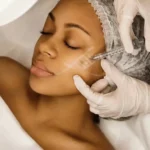

The skin covers the entire body, making it our largest organ. Due to its exposure to the elements, it comes as no surprise that the skin is largely affected by the environment and its changes. Temperature and humidity changes necessitate adjusting skincare routines to maintain skin health, as many skin-related diseases and issues—such as acne, psoriasis, eczema, and rosacea—show seasonal variability. Fortunately, there are plenty of skincare products that differ in terms of moisture content, thickness, and strength, which means there are plenty of products to meet the skin’s needs. It is important to consider seasonal changes when planning clinical treatments as well, certainly with products similar to Ellanse.
Understanding the structure and function of skin
The skin can be divided into two main layers: the epidermis and dermis. The uppermost layer is the epidermis, which is composed of tightly packed epithelial cells. It is essentially the barrier that keeps out harmful substances such as bacteria, toxins, and UV light, among a number of others. The epidermis is primarily composed of keratinocytes, which form the stratum corneum on the outermost layer of the epidermis. Melanocytes, the cells responsible for producing melanin in response to UV radiation and hormonal stimulation, are mixed in.
The dermis is composed of connective tissue and is comprised of a mixture of nerve endings, blood vessels, hair follicles, sebaceous glands, and sweat glands. It is also a thicker layer due to collagen and elastin; these substances give the skin its strength and flexibility. Finally, below the dermis is the subcutaneous layer called the hypodermis. It is a layer of loose connective tissue made up of a number of fat cells.
Skin changes with seasons
Recently, the British Journal of Dermatology published a study suggesting that the barrier function of the skin changes between the summer and winter. Looking specifically at the skin on cheeks and hands in summer and winter, the researchers assessed the changes that occur in skin at the cellular level in 80 subjects. They analysed natural moisturizing factors (NMF) and skin texture. There are seasonal effects on NMFs in hands and cheeks, and there is also an increase in the breakdown of filaggrin, which is a protein that maintains the barrier’s function. Additionally, they found changes in the texture of corneocytes.
The heat of the summer often increases sebum production in the skin, and pigmentation increases due to UV exposure. On the contrary, trans-epidermal water loss occurs at a lower rate during the summer; this means that the skin is more hydrated and that more beneficial lipids are present in the stratum corneum than during to the winter months. So, what causes such huge changes in our skin’s behaviour and how do we minimize potential damage?
Also Read: Mesotherapy for Facial Skin Hydration
Warm weather
Although being in the sun can be dangerous due to exposure to UV radiation, there is the benefit of vitamin D being produced via sun exposure. In many countries, winters are dark, and there is not enough UVB radiation to synthesize vitamin D. This process can only occur during the warmer months. The NHS recommends safely getting vitamin D by exposing uncovered skin to the sun for short periods of time. Between the hours of 11:00 a.m. and 3:00 p.m., most people can expose their limbs to the sun for up to 30 minutes, but sunscreen should be worn on the face to protect it from premature aging. Vitamin D offers many benefits to the skin as well, as it aids in cell differentiation, proliferation, cutaneous immune function, and much more. In fact, being deficient in vitamin D has been linked to acne and skin cancers.
Pigment change can also occur due to sun exposure, and patients undergoing laser or plasma treatments and effective chemical peels are more likely to develop post-inflammatory hyperpigmentation. Those with melasma often find that it worsens during the summer. These concerns or complications can be avoided by using SPF sunscreen, avoiding direct sunlight, and keeping out of extreme heat.
High temperatures lead to an increase in sebum production. When it mixes with sweat, the skin looks very shiny. As such, acne might get worse, but, conversely, it may get better because there is less dead and dry skin to clog pores. Eczema and psoriasis have also been found to improve during the summer months. On the other hand, heat and humidity might lead to fungal infections, such as athlete’s foot. Rosacea is worsened by UV radiation. Some medications may also increase photosensitivity, and patients may develop rashes as a result.
Treatment
In the summer, it is best to avoid aggressive treatments such as retinol, unless the patient adheres to using SPF daily and stays out of the sun. Otherwise, patients are advised to use an oil-controlling cleanser and a light antioxidant serum to take care of any free radicals created by UV exposure. In patients with oily and acne-prone skin, chemical and physical exfoliation is recommended along with a salicylic acid product to break up the sebum. Mandelic acid is an appropriate chemical peel for the summertime, as it is a less aggressive alpha hydroxy acid and less likely to cause complications. Otherwise, any treatments that might cause PIH, such as lasers, peels, or plasma, should be limited or avoided.
Cooler months
The winter can be harsh on the skin due to the rapidly changing temperatures. When we go from inside to outside, capillaries expand and contract, causing redness and telangiectasia. When we are exposed to wet, snowy weather, our barrier function can be stripped. The cold, dry air only increases trans-epidermal water loss. Combined with central heating, skin often ends up dry and irritated. Patients with already dry skin will often experience some difficulties managing the excessive dryness.
Treatment
During the winter months, the goal should be to increase hydration and promote the natural moisture of the skin in order to support the health of the epidermis. Repairing the barrier function can be accomplished with ingredients like ceramides and hyaluronic acid, whereas colloidal oatmeal soothes dry and itchy skin. Since temperatures and UV radiation are much lower during these months, the risk of complications from more aggressive procedures is minimized, but the skin should be appropriately prepared prior to being subjected to these sorts of procedures so as to avoid complications. This means that during the fall months, the skin can be treated with retinols to prepare it for peels and lasers. Finally, just because it is cold does not mean patients should forgo SPF protection!
Summary
Temperature, humidity, and UV radiation all change with the seasons. It is no surprise our skin is affected by these changes! Understanding the physiology of our skin can help patients prepare for all the variations caused by the changing of the seasons, which in turn can help them minimize the chances of developing skin diseases. Importantly, patients should not wait for signs of disease before seeking or beginning treatment. Preparing the skin in the spring and fall will ensure that skin is ready for the more extreme conditions of summer and winter.
Aesthetic products generally refer to a broad category of items designed to enhance or improve one's appearance, often focusing on skincare, beauty, and personal grooming. These products are typically used to maintain or enhance physical attractiveness and may include a wide range of items intended for both professional and personal use. Here are some common types of aesthetic products:
-
Skincare Products: Including cleansers, moisturizers, serums, and treatments designed to address various skin concerns such as acne, aging, hyperpigmentation, and sensitivity.
-
Cosmetics: Makeup products such as foundations, concealers, eyeliners, lipsticks, and eyeshadows used to enhance facial features and achieve desired looks.
-
Hair Care Products: Shampoos, conditioners, styling products, and treatments to maintain and improve the health and appearance of hair.
-
Fragrances: Perfumes and colognes used to enhance personal scent and attractiveness.
-
Dental Care Products: Toothpaste, mouthwash, whitening treatments, and dental floss aimed at maintaining oral hygiene and enhancing smile aesthetics.
-
Personal Grooming Tools: Including razors, electric shavers, trimmers, and grooming kits used for hair removal and personal hygiene.
-
Beauty Devices: Devices such as facial cleansing brushes, LED light therapy masks, and microcurrent devices designed for at-home skincare treatments.
-
Nutritional Supplements: Supplements aimed at promoting skin health, hair growth, and overall well-being, often containing vitamins, minerals, and antioxidants.




